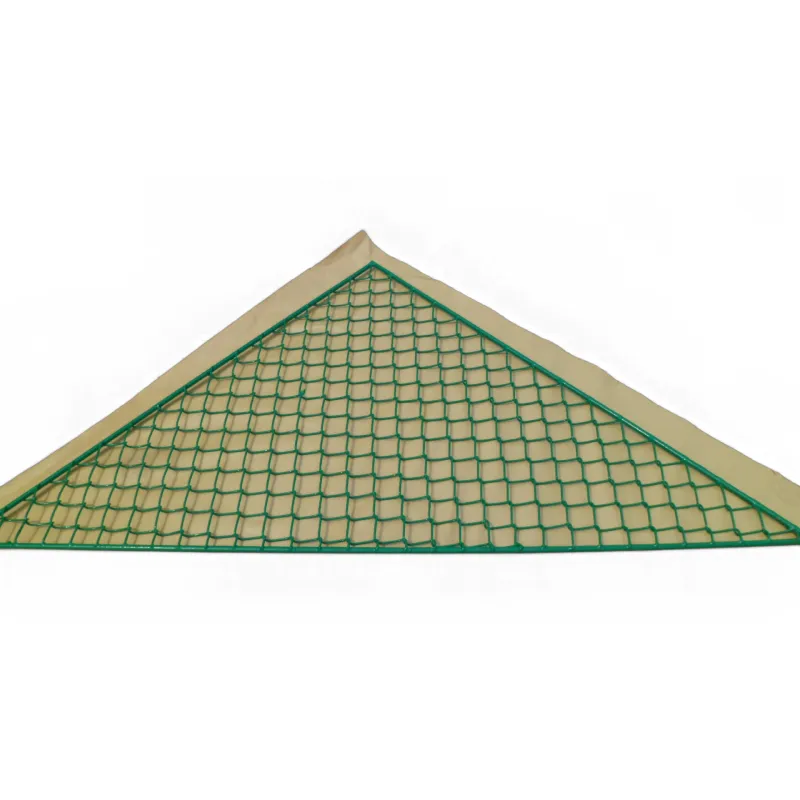- Industrial zone, South of Anping Town, Hengshui, Hebei, China.
- sales@hfpetromesh.com
- +86-18931809706
 Afrikaans
Afrikaans  Albanian
Albanian  Amharic
Amharic  Arabic
Arabic  Armenian
Armenian  Azerbaijani
Azerbaijani  Basque
Basque  Belarusian
Belarusian  Bengali
Bengali  Bosnian
Bosnian  Bulgarian
Bulgarian  Catalan
Catalan  Cebuano
Cebuano  Corsican
Corsican  Croatian
Croatian  Czech
Czech  Danish
Danish  Dutch
Dutch  English
English  Esperanto
Esperanto  Estonian
Estonian  Finnish
Finnish  French
French  Frisian
Frisian  Galician
Galician  Georgian
Georgian  German
German  Greek
Greek  Gujarati
Gujarati  Haitian Creole
Haitian Creole  hausa
hausa  hawaiian
hawaiian  Hebrew
Hebrew  Hindi
Hindi  Miao
Miao  Hungarian
Hungarian  Icelandic
Icelandic  igbo
igbo  Indonesian
Indonesian  irish
irish  Italian
Italian  Japanese
Japanese  Javanese
Javanese  Kannada
Kannada  kazakh
kazakh  Khmer
Khmer  Rwandese
Rwandese  Korean
Korean  Kurdish
Kurdish  Kyrgyz
Kyrgyz  Lao
Lao  Latin
Latin  Latvian
Latvian  Lithuanian
Lithuanian  Luxembourgish
Luxembourgish  Macedonian
Macedonian  Malgashi
Malgashi  Malay
Malay  Malayalam
Malayalam  Maltese
Maltese  Maori
Maori  Marathi
Marathi  Mongolian
Mongolian  Myanmar
Myanmar  Nepali
Nepali  Norwegian
Norwegian  Norwegian
Norwegian  Occitan
Occitan  Pashto
Pashto  Persian
Persian  Polish
Polish  Portuguese
Portuguese  Punjabi
Punjabi  Romanian
Romanian  Russian
Russian  Samoan
Samoan  Scottish Gaelic
Scottish Gaelic  Serbian
Serbian  Sesotho
Sesotho  Shona
Shona  Sindhi
Sindhi  Sinhala
Sinhala  Slovak
Slovak  Slovenian
Slovenian  Somali
Somali  Spanish
Spanish  Sundanese
Sundanese  Swahili
Swahili  Swedish
Swedish  Tagalog
Tagalog  Tajik
Tajik  Tamil
Tamil  Tatar
Tatar  Telugu
Telugu  Thai
Thai  Turkish
Turkish  Turkmen
Turkmen  Ukrainian
Ukrainian  Urdu
Urdu  Uighur
Uighur  Uzbek
Uzbek  Vietnamese
Vietnamese  Welsh
Welsh  Bantu
Bantu  Yiddish
Yiddish  Yoruba
Yoruba  Zulu
Zulu
- Afrikaans
- Albanian
- Amharic
- Arabic
- Armenian
- Azerbaijani
- Basque
- Belarusian
- Bengali
- Bosnian
- Bulgarian
- Catalan
- Cebuano
- Corsican
- Croatian
- Czech
- Danish
- Dutch
- English
- Esperanto
- Estonian
- Finnish
- French
- Frisian
- Galician
- Georgian
- German
- Greek
- Gujarati
- Haitian Creole
- hausa
- hawaiian
- Hebrew
- Hindi
- Miao
- Hungarian
- Icelandic
- igbo
- Indonesian
- irish
- Italian
- Japanese
- Javanese
- Kannada
- kazakh
- Khmer
- Rwandese
- Korean
- Kurdish
- Kyrgyz
- Lao
- Latin
- Latvian
- Lithuanian
- Luxembourgish
- Macedonian
- Malgashi
- Malay
- Malayalam
- Maltese
- Maori
- Marathi
- Mongolian
- Myanmar
- Nepali
- Norwegian
- Norwegian
- Occitan
- Pashto
- Persian
- Polish
- Portuguese
- Punjabi
- Romanian
- Russian
- Samoan
- Scottish Gaelic
- Serbian
- Sesotho
- Shona
- Sindhi
- Sinhala
- Slovak
- Slovenian
- Somali
- Spanish
- Sundanese
- Swahili
- Swedish
- Tagalog
- Tajik
- Tamil
- Tatar
- Telugu
- Thai
- Turkish
- Turkmen
- Ukrainian
- Urdu
- Uighur
- Uzbek
- Vietnamese
- Welsh
- Bantu
- Yiddish
- Yoruba
- Zulu
Galvanized Grating Sizes - Durable & Customizable Solutions
Understanding Galvanized Grating Sizes
Galvanized grating is a popular choice in various industrial applications due to its durability, corrosion resistance, and customizable sizes. It is primarily made from steel that has undergone a hot-dip galvanization process, ensuring it can withstand harsh environments, including exposure to moisture and chemicals. Understanding the different sizes of galvanized grating is crucial for achieving optimal performance in any construction or industrial project.
What is Galvanized Grating?
Galvanized grating refers to a type of flooring or walkable surface used in industrial settings, pedestrian walkways, and platforms. Its design typically consists of a series of parallel bars that are spaced apart to allow for drainage and airflow while providing a sturdy walking or working surface. Common materials include steel or aluminum, with steel galvanized to prevent rusting.
Size Specifications
The size of galvanized grating can vary widely to meet the specific needs of different applications. The measurements typically include the following dimensions
1. Width Most galvanized grating panels come in standard widths, generally ranging from 24 inches to 48 inches. However, custom sizes are available for unique projects.
2. Length Length can be tailored to suit the installation area. Panels are often produced in lengths up to 20 feet, although this can be adjusted based on the project requirements.
3. Thickness The thickness of the bars can also vary. Common thicknesses range from 1/4 inch to 1 inch, depending on load requirements and the type of traffic expected on the grating.
galvanized grating sizes

4. Spacing The distance between the bars is an essential factor in determining the grating's load-bearing capabilities. Bar spacing will commonly be 1 inch or 2 inches apart, with some applications allowing for tighter configurations.
Choosing the Right Size
When selecting galvanized grating sizes, consider the following factors
- Load Requirements Understand the weight and type of traffic the grating will endure. This will inform the thickness and spacing needed for adequate support.
- Environmental Conditions The area where the grating will be installed can influence the size. For example, grating in wet environments may require different spacing to manage water runoff effectively.
- Regulatory Standards Ensure compliance with any relevant safety or building codes, which may dictate specific sizing or load requirements.
Conclusion
Galvanized grating sizes are integral to the success of many projects across various industries. By understanding the dimensions and considering specific application requirements, one can select the appropriate galvanized grating to ensure safety, efficiency, and longevity in construction and industrial use. Investing time in this selection process is vital for achieving long-lasting results that stand up to rigorous demands.
-
Upgrade Your Industrial Operations with Durable Steel GratingNewsJul.21,2025
-
Transform Your Flooring Solutions with Quality Floor GratingNewsJul.21,2025
-
Top-Quality Shale Shaker Screens for Your Drilling NeedsNewsJul.21,2025
-
High-Quality Steel Grating for All Your Industrial NeedsNewsJul.21,2025
-
Explore the Durability and Versatility of Galvanized Steel GratingNewsJul.21,2025
-
Ensure Maximum Safety with Premium Safety NetsNewsJul.21,2025